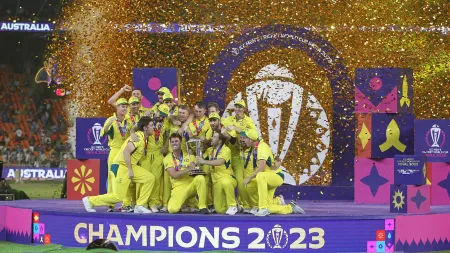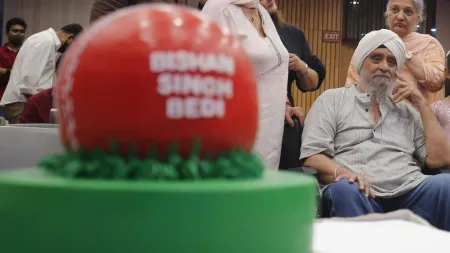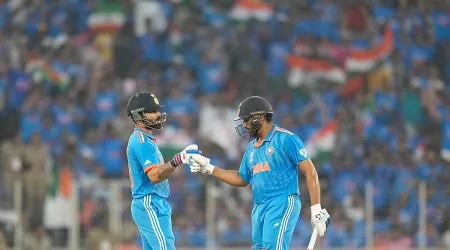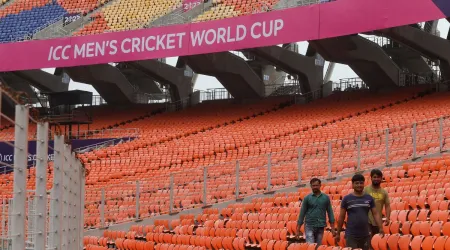- India
- International
Azlan Shah Cup: A few takeaways for India men’s hockey team
India hockey team's performance over the last one week at the Azlan Shah Cup gave a glimpse into the team's preparation for Rio 2016.
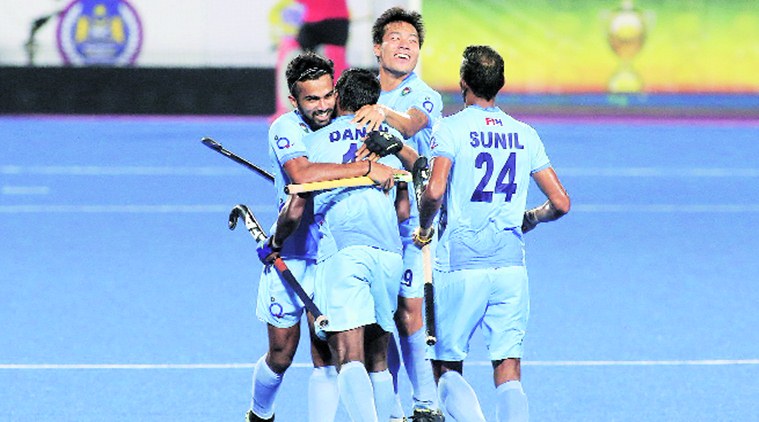 India fielded a young team but came up with encouraging performances.
India fielded a young team but came up with encouraging performances.
From the start, this wasn’t about the result. India have traditionally done well at the Azlan Shah Cup. But a podium finish at the invitational tournament did little else apart from giving the coach, players and the followers a false sense of security. This time, though, it was different. With Olympics just three months away, coach Roelant Oltmans decided to use the tournament to test a few players and identify back-ups for some positions. And although India were humbled, yet again, by Australia in the final, the performance over the last one week gave a glimpse into the team’s preparation for the Rio Games this August. The Indian Express looks at a few takeaways for team India:
No back-up for Sreejesh
You almost felt sorry for Harjot Singh when he started the final against Australia on the bench. For nearly two years, he has played second fiddle to PR Sreejesh and when his opportunity came to be the lead goalkeeper, he was eventually overtaken by a young and untested Akash Chikte. However, Harjot has only himself to blame. With Oltmans opting to rest Sreejesh to give the back-up goalie an opportunity, you would have expected Harjot to be up for the task and prove that he is the worthy successor.
But as the week wore on, his performance showed why all coaches in the last two years (Terry Walsh, Paul van Ass and now Oltmans) have been reluctant to give Sreejesh a break even for one match and play him in the goal instead. He was indecisive, careless and too casual in the goal, getting beaten far too often on his near post and wasn’t brave enough – a trait that sets Sreejesh apart. Between Harjot and Chikte, India conceded 15 goals in seven matches including the final. It can be argued that the defence in front of them wasn’t the strongest, but there were several occasions where they could’ve done better.
Even Oltmans, who generally does not pick on players individually, did not seem happy with Harjot’s approach. “He casually gave away the penalty corner. I took Harjot off the pitch because of this careless act,” Oltmans said after the match against Canada. “That’s just unacceptable.” If India’s intent was to look for Sreejesh’s back-up, the tournament has produced more questions than answers.
Drag-flick dilemma
Harmanpreet Singh has been making waves in the junior international circuit for quite some time with his powerful, accurate drag-flicks and slick defending. Whether he would hold his own in the rough and quick-paced senior level was a question on many a mind. And going by what we saw over the last seven days, Harmanpreet does look the real deal. He looked threatening every time he stood on top of the ‘D’ to take a drag-flick and looked assured and composed in the defence as well. His performance would give Oltmans a headache when it comes to selecting drag-flickers for the Olympics, and it wouldn’t be a surprise if he puts pressure on VR Raghunath and Rupinderpal Singh for a spot in the squad.

Oltmans selected an experimental squad for the tournament, with the average age of the side being 23.5 years, and he would have been satisfied with what he saw. Harjeet Singh, playing his maiden international tournament, impressed in bits but considering that he prefers playing as a centre-half – a position Sardar Singh and Manpreet Singh generally occupy – he was largely overshadowed by the duo. But the junior India captain made most of his opportunities, also scoring his maiden India goal during the tournament. Surender Singh and Chikte, the other two junior players who were given a chance, didn’t do much wrong but didn’t do anything spectacular either that would have grabbed Oltmans’ attention.
Nikkin, Ramandeep and goals
Nikkin Thimmaiah is perhaps the most under-rated players in the team. He works his socks off and is selfless, a kind of player any coach would want in his team. A shoulder injury sidelined him for quite some time and playing in his first international tournament since recovering, Nikkin’s return boosted the forward line, giving them a much-needed edge. He combined well along with the perennially misfiring SV Sunil, Talwinder Singh and Ramandeep Singh, who too came up with some opportunistic strikes in this tournament.
India scored 18 goals in the tournament, second-most in the seven-nation tournament after Australia. Their form bodes well for India, considering that Akashdeep Singh, Lalit Upadhyay and Devinder Walmiki will make their way into the squad. It is a young and energetic attack line-up, although positioning inside the box and ball control still remains below par. With a little more coordination and finesse, Oltmans could have found solutions to India’s field goals problems.
Sunil relishes responsibility
A captain has few responsibilities on a field. And the vice-captain has fewer. But SV Sunil seemed to relish the responsibility of being Sardar Singh’s deputy during the tournament. He played with a lot of self-control and involved others in the game more often rather than just dashing forward using his blinding pace in the hope that his teammates would catch up him. He scored goals too with some deft touches, reminding us of what he is capable of.
At the same time, India showed that they still rely heavily on Sardar and Manpreet Singh to hold the midfield. Manpreet missed the first two matches after he lost his father just before the tournament began. In his absence, Sardar looked overworked. And even though the skipper isn’t the same player that he used to be a couple of years ago, he remains the creative outlet. Worryingly for India, when both players had an off day – against New Zealand – it affected the overall performance, and eventually they lost the match 2-1.
Tougher opponents
That brings us to the last and perhaps one of the most important points. Apart from the lowly Canada, India could not manage to beat the two other Rio-bound teams. The defeat to New Zealand, and the twin losses to Australia, exposed a lot of chinks in India’s armour, most of all the fragile defence. When put under pressure, the midfield gave up and the back line looked hopelessly out of sorts.
India can argue that they were playing an experimental side. But Australia, too, had their own problems. The world champions came to Malaysia with just 16 players, two less than all other teams, to acclimatise themselves to the Olympics rules. They played the final without their two key men – Jamie Dwyer and Chris Cirello were both nursing minor injuries – which reduced their outfield playing options to just 12. To play in Malaysian humidity for an hour with a just dozen players is a huge challenge but Australia showed their superior fitness by systematically dismantling India.
And New Zealand… Well, they are a team that made it to the Olympics only because South Africa decided not to send theirs. Losing to them is no shame but it would give Oltmans a lot to ponder over. There were many takeaways for India. But with Olympics a little more than 100 days away, what would bother them is the inability to beat top teams when they’re playing full throttle with their first-choice players.


















